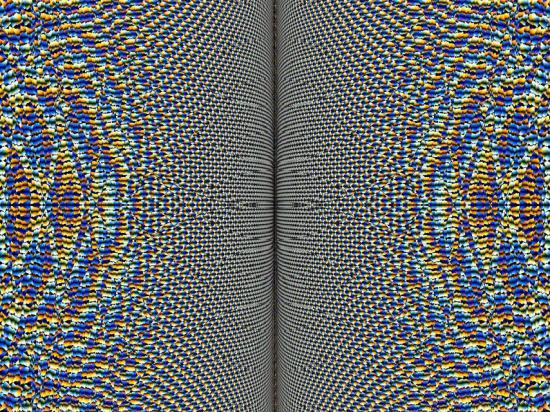BY LETTER
Weak Eigenspace Hunters
Culture and Society > Economics
Science > Physics > Information Physics
Science > Mathematics
Culture and Society > Economics > Occupations, Avocations, and Work
Science > Physics > Information Physics
Science > Mathematics
Culture and Society > Economics > Occupations, Avocations, and Work
 Image from John B |
Control of chaotic systems is of vital importance for all sufficiently complex civilisations. Due to the manifold instabilities of complex systems they become unreliable, but at the same time paradoxically possible to control by exploiting their sensitivity to small influences. Monitoring the system, estimating a desired unstable orbit and its eigenvalues and adaptively nudging the system towards it can bring the system into a predictable regime.
History
Since the Ott, Grebogi, and Yorke Development institutes theorized it in the early federation period, it has been developed into a major discipline of complexity management, extending into interstellar economies, transapient societies to godtech engineering.Although limited attempts at large scale chaos control were undertaken during the Solsys Era (e.g. the Mars climate management project and the Yellowstar Net control initiative) it was during the First Federation that chaos control became widespread in weather management, economics, infogrowth, ecotecture, envirotech and many other fields. It is estimated that without constant complexity management performed on all scales the infrastructure of most inner sphere cultures would collapse within 24 hours.
Although control of chaotic phenomena is well understood in the present day, it is still not perfect by modosophont or subsingularity beings. There is usually no way to guarantee, even in principle, that the predictable state will persist, and bursts of chaos will occasionally occur, especially when the system is severely disturbed. More seriously, there can exist weak eigenmodes that are hard to detect and to control since their eigenvalues are too small to measure (by modo standard) with the required precision.
Description
Weak eigenspace hunters seek out the disruptive eigenmodes in a system and defuse them. When chaos controllers detect unexpected instabilities, the hunters explore the system (be it a planetary climate, interstellar stock markets or a computer network) to find the weak eigenspace of disruption. Once identified it is removed, either by making the eigenvalues large enough to be controllable or by removing the source. For example, in weather control it is common that isolated mountains produce von Karman vortices that disrupt circulation control; by removing the mountains or reshaping them slightly to modify the vortices, the control can be improved. Similarly, political and economic control can be achieved, although the complication of having many agents with different agendas and possibly even their own chaos control makes the effectiveness much more variable.It should be noted that weak eigenspaces can also be introduced and manipulated, not only deleted, and accusations of chaos warfare have been made for many millennia. Finding evidence is extraordinarily hard, and only a handful of documented cases are known by the general public. The most famous was the 8832-8850 AT disruption of Thryjvor Prefecture where Bangingitax infiltrators successfully caused an estimated 4 petacredit loss in efficiency without being discovered for 18 years. When they were discovered it was due to a deep agent sent by Solar Dominion authorities to infiltrate the Bangingitax for completely unrelated reasons.
Weak eigenspace hunters are educated and employed across civilised space, but the most well-known education or programming institutions are all located within the Negentropy Alliance for obvious cultural reasons, despite the efforts that have been spent on creating chaos-free complex systems in the Alliance. Eigenspace hunters of various kinds (and complexity management consultancy, software and skill) has been a large part of Negentropic export since the end of the Version War.
Glossary
Eigenvalue. Eigenvalues are the scalar value of vectors that have their directions unchanged by a linear transformation.Eigenspace. An space that remains unchanged.
Weak eigenspace. An space that changes slowly or unperceptibly.
Kármán vortex. In fluid dynamics, a process known as vortex shedding is responsible for the unsteady separation of flow of a fluid around blunt bodies. This, applied to the atmosphere produces a repeating pattern of swirling vortices known as a von Kármán vortex street.
Related Articles
- Chaos and Chaos Theory - Text by M. Alan Kazlev
Irregular motion of a dynamic system that is impossible to predict in the long term. A defining quality of most complex (whether living or non-living) systems.
Chaos theory is the branch of mathematics, simulation, and applied cosmology that deals with chaos. - Chaos Wand
- Complex System
- Complexity
Appears in Topics
Development Notes
Text by Anders Sandberg
Initially published on 17 December 2000.
Initially published on 17 December 2000.






